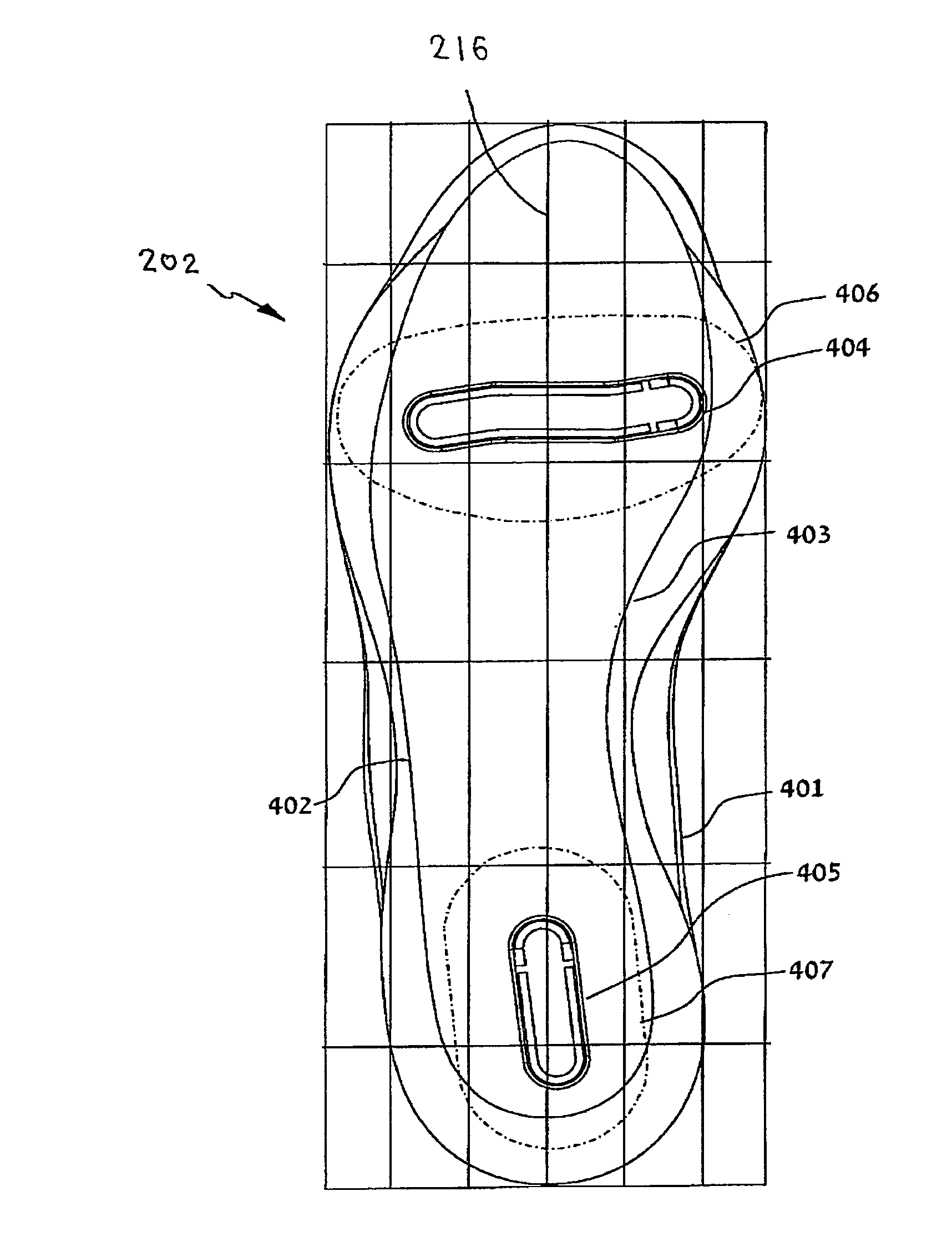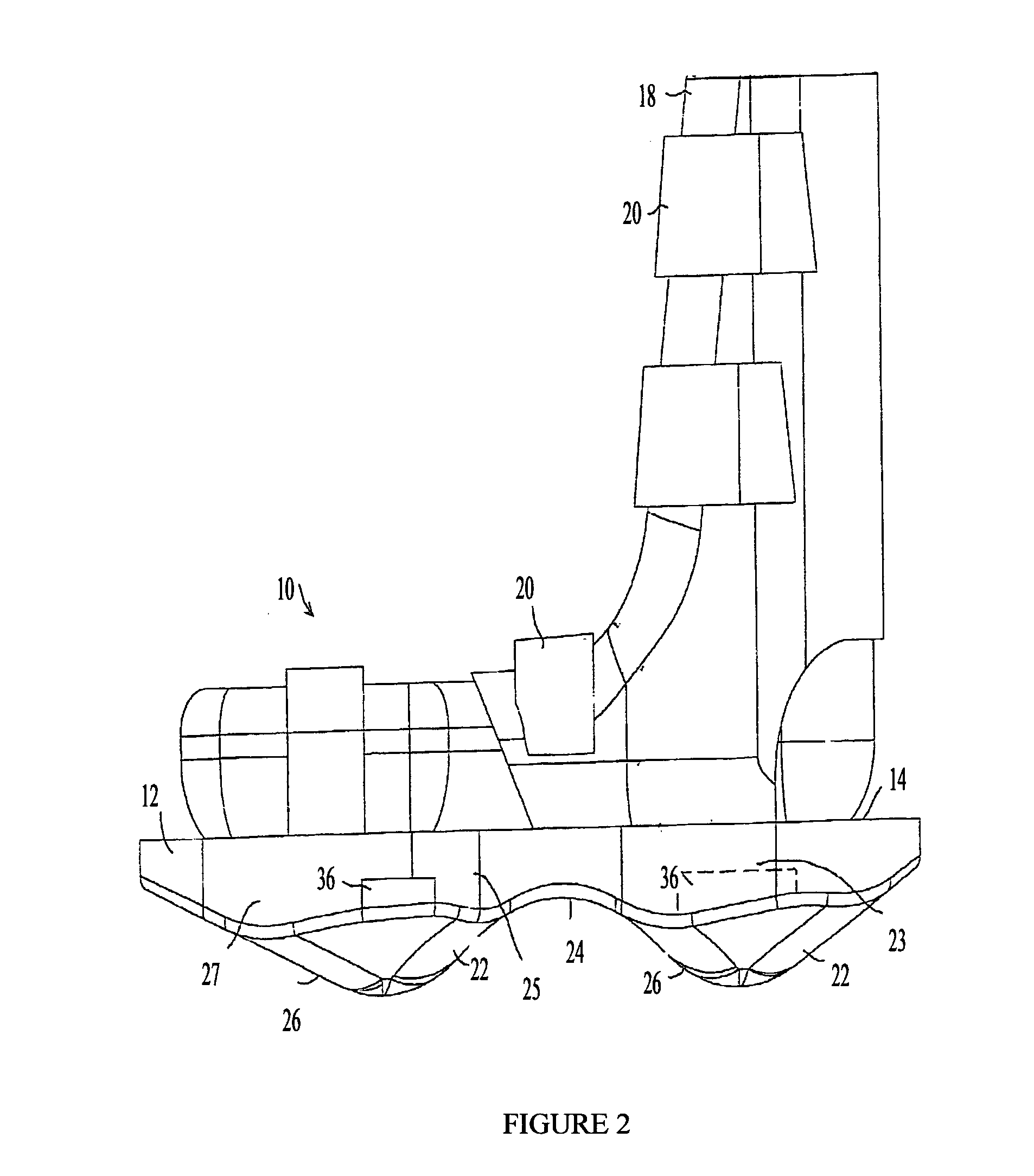Device and Methods for Tuning a Skeletal Muscle
a technology of skeletal muscle and device, applied in the field of differential tuning of muscles, can solve the problems that the muscle activity accounts for a large amount of the body's energy consumption, and achieve the effects of reducing inversion, minimal or reducing pain position, and reducing eversion to the subject's foo
- Summary
- Abstract
- Description
- Claims
- Application Information
AI Technical Summary
Benefits of technology
Problems solved by technology
Method used
Image
Examples
example 1
Muscle tuning in functional Ankle Instability (FAI) (Chronic Ankle Instability)
[0217]A 23 years old male patient was presented to the treatment center with a longstanding complaint of repetitive sprains of both ankles.
[0218]Case History: The patient reported that he first sprained his left ankle at the age of 12. Shortly thereafter he sprained his right ankle. He reported that the frequency of ankle sprains increased since and at the time of the first assessment he was avoiding any uneven terrain. He avoided any sporting activities unless he used ankle braces (Aircast) bilaterally. He had pain on the lateral aspect of both ankles during outdoor walking whenever he walked for a distance greater than 1.5 kilometres (VAS left-3 / 10, right-4 / 10). He also reported fatigue on the lateral aspect of both calves and a mild burning sensation along the tendons of the peronei bilaterally after prolonged walking.
[0219]Physical Examination: On observation there was mild swelling on the anterior as...
example 2
Prevention Program to Prevent an ACL Tear in an Athlete
[0229]A 20 years old female professional basketball player was presented to the treatment canter. The patient was a professional basketball player performing 10 basketball practices a week. at the time of the assessment she was had no physical complaints. The team physiotherapist had noticed that when she lands from a jump and changes direction during running, her knees fall into a significant valgus alignment. It is known that such lack of movement control, specifically in female athletes, significantly increases the risk for ACL tear.
[0230]Physical Examination: On observation the patient had hyperpronating feet and both the right and the left knees were in a valgus alignment (estimated as 15 degrees). Muscle mass appeared good and there were no apparent asymmetries. Knee and ankle joint stability tests were all negative (Knee: anterior drawer test, valgus stress test, varus stress test, Lachman's test. Ankle: anterior drawer t...
PUM
 Login to View More
Login to View More Abstract
Description
Claims
Application Information
 Login to View More
Login to View More - R&D
- Intellectual Property
- Life Sciences
- Materials
- Tech Scout
- Unparalleled Data Quality
- Higher Quality Content
- 60% Fewer Hallucinations
Browse by: Latest US Patents, China's latest patents, Technical Efficacy Thesaurus, Application Domain, Technology Topic, Popular Technical Reports.
© 2025 PatSnap. All rights reserved.Legal|Privacy policy|Modern Slavery Act Transparency Statement|Sitemap|About US| Contact US: help@patsnap.com



